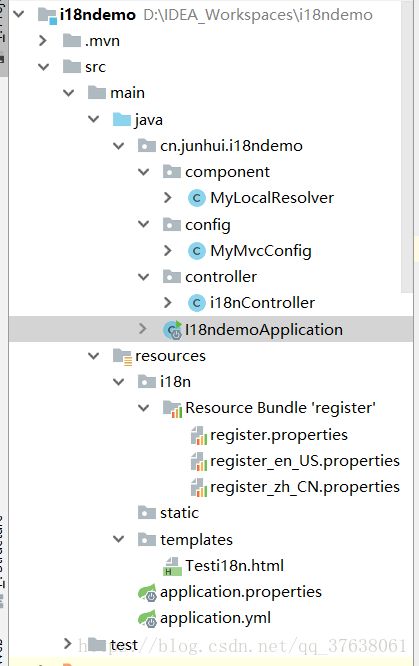前言:thymeleaf肯定得导入pom文件了
1.先在resource下新建一个文件夹,用来存国际化的配置文件,(至于为什么起名为 i18n,因为 国际化这个单词 是 Internationalization 在i和n之间还有18个字母。所以本地化 Localization 的简写就是 l10n 了)

2.在 i18n 下 新建一个register.properties(现在idea还没有识别出来是在进行国际化配置)
现在长这样

再建一个 register_en_US.properties
你会发现它神奇的变了(idea识别了你在国际化配置)接下来就好办了,再来配个中文的


idea很智能的在左侧生成了一个中文的,
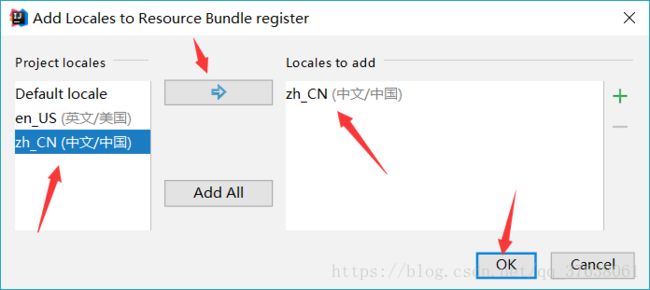
如果左侧没有的话。点击右侧的加号

这样也是可以的
接下来,编写配置文件
点这个

然后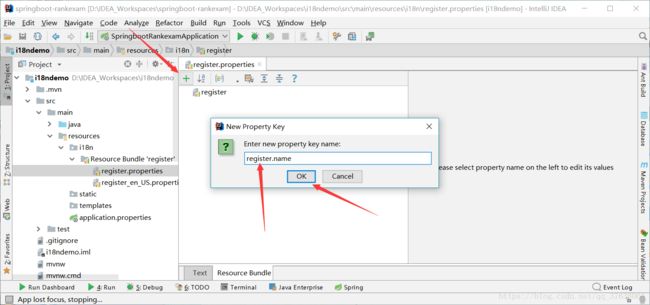
最后
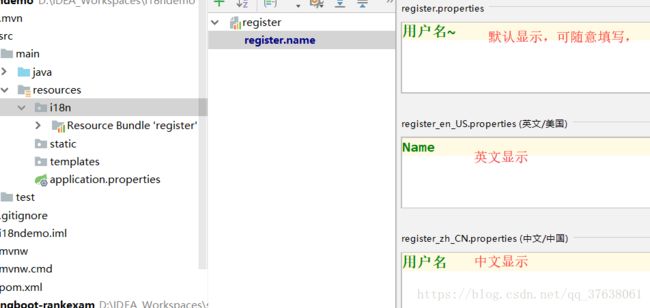
到此为止一个国际化的配置就配好了,如果还有其他的需要配置的,自己设置就好。
接下来编写springboot的配置文件,我使用的是yml文件
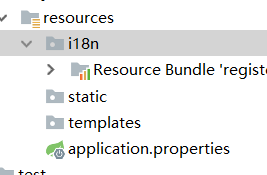
spriungboot默认没有生成application.yml,需要自己新建一个,右击resources,新建一个File,吧application.yml填入即可

右边具体写什么,是由左边的文件名构成的,
spring:
messages:
basename: i18n.register
thymeleaf:
cache: false
#后面这两行是取消了thymeleaf的缓存,之后修改页面的时候,按完 ctrl s之后再按ctrl F9,直接刷新页面就好了,不用再重启服务器了 |
在java下新建一个 解析区域信息的类

这个类需要实现
org.springframework.web.servlet.LocaleResolver;
一定要导入正确的包,否则,后果不堪设想,在导包正确的情况下,同时按下 Ctrl 和 O键,选中下面的两个,点击ok

package cn.junhui.i18ndemo.component;
import org.springframework.util.StringUtils;
import org.springframework.web.servlet.LocaleResolver;
import javax.servlet.http.HttpServletRequest;
import javax.servlet.http.HttpServletResponse;
import java.util.Locale;
public class MyLocalResolver implements LocaleResolver {
/*
重写本地区域化信息
*/
@Override
public Locale resolveLocale(HttpServletRequest request) {
String lan = request.getParameter("lan");
Locale locale = Locale.getDefault();
if (!StringUtils.isEmpty(lan)) {
String[] split = lan.split("_");
locale = new Locale(split[0], split[1]);
}
return locale;
}
@Override
public void setLocale(HttpServletRequest httpServletRequest, HttpServletResponse httpServletResponse, Locale locale) {
}
}
|
我用红色标记的是之后在超链接上携带的字符串,大家可以随意编写,只需要跟以后的一样就行
再编写一个配置类,

package cn.junhui.i18ndemo.config;
import cn.junhui.i18ndemo.component.MyLocalResolver;
import org.springframework.context.annotation.Bean;
import org.springframework.context.annotation.Configuration;
import org.springframework.web.servlet.LocaleResolver;
import org.springframework.web.servlet.config.annotation.WebMvcConfigurationSupport;
@Configuration
public class MyMvcConfig extends WebMvcConfigurationSupport {
@Bean
public LocaleResolver localeResolver() {
return new MyLocalResolver();
}
}
|
导包的时候注意一点,千万不要导错包,
接下来还需要一个Controller
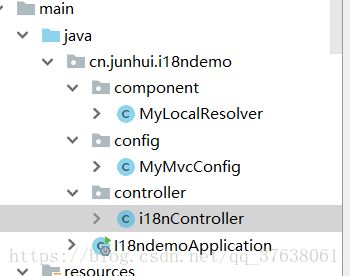
package cn.junhui.i18ndemo.controller;
import org.springframework.context.annotation.Configuration;
import org.springframework.stereotype.Controller;
import org.springframework.web.bind.annotation.GetMapping;
import org.springframework.web.servlet.ModelAndView;
@Controller
public class i18nController {
@GetMapping("/i18n")
public ModelAndView toIndex() {
return new ModelAndView("Testi18n");
}
}
|
配置基本写好了,接下来来个页面测试一下
大功基本已经告成,启动springboot
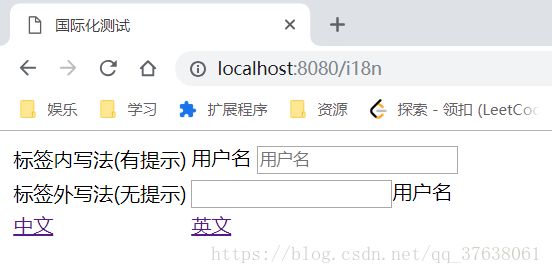
因为我的谷歌浏览器的语言默认为中文,所以他直接就显示是中文
下面是点击 英文 超链接显示的,注意观看地址栏的变化
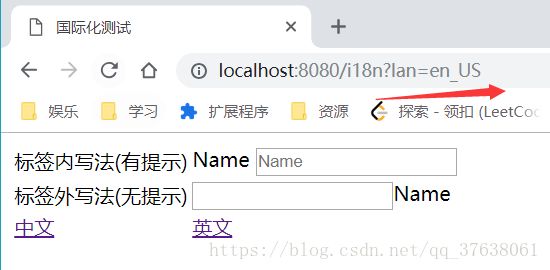
来张中文的

大功告成!
附:项目结构图
